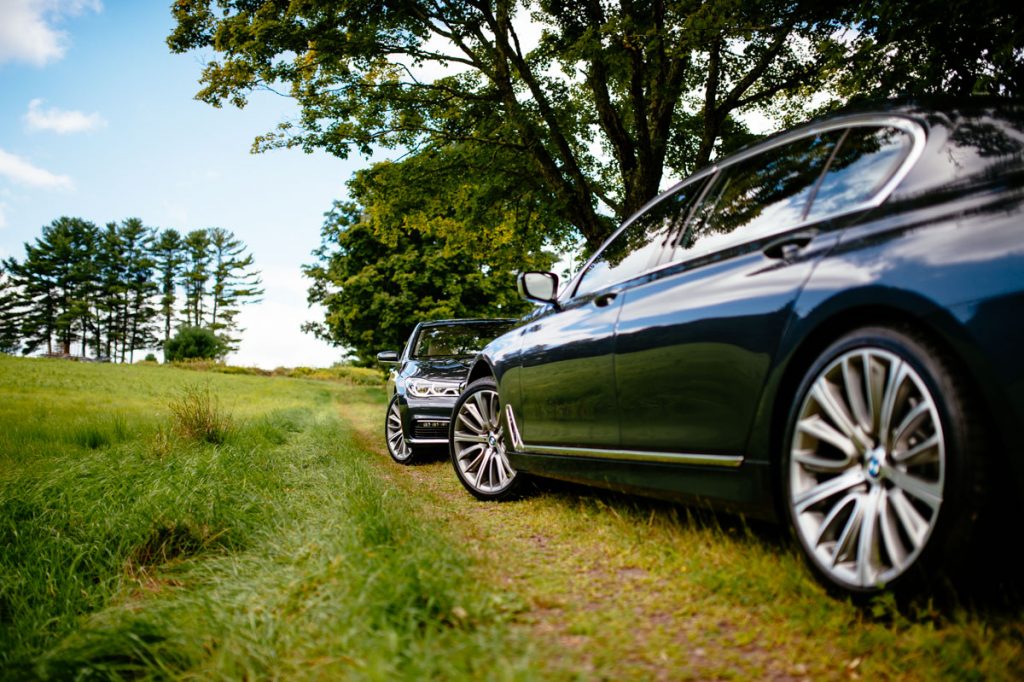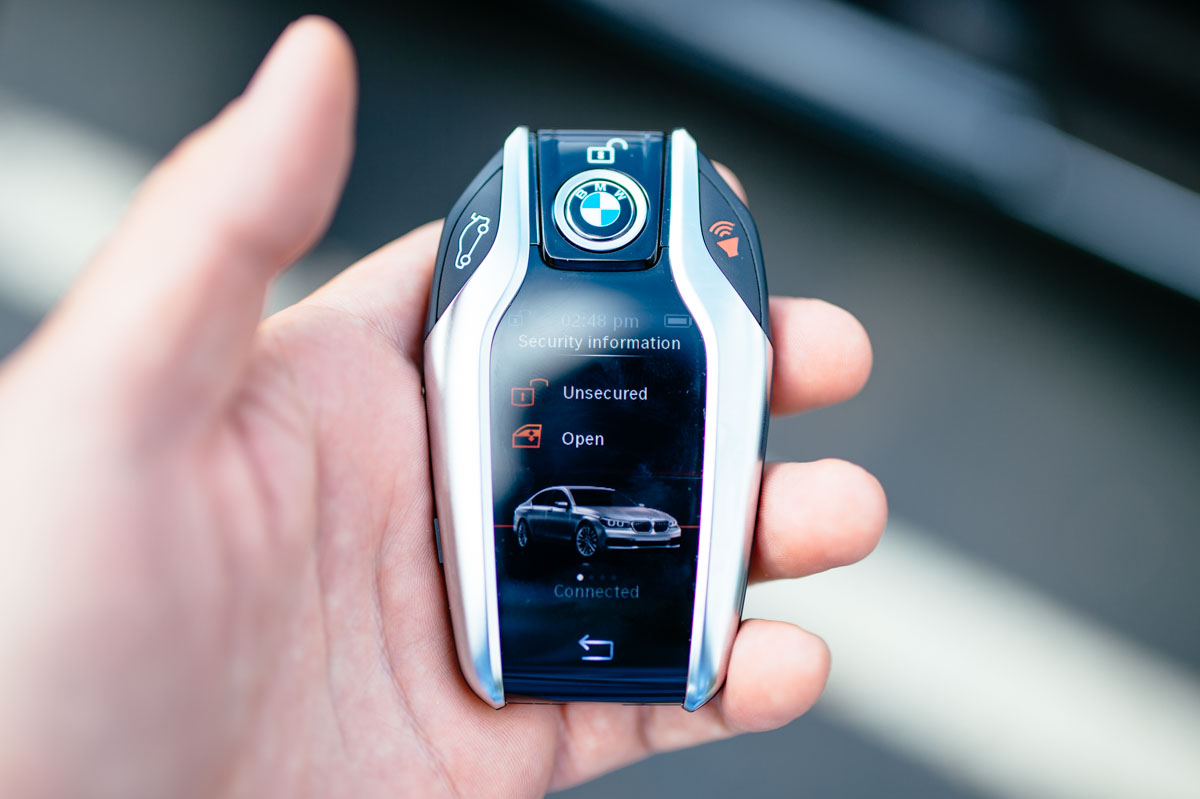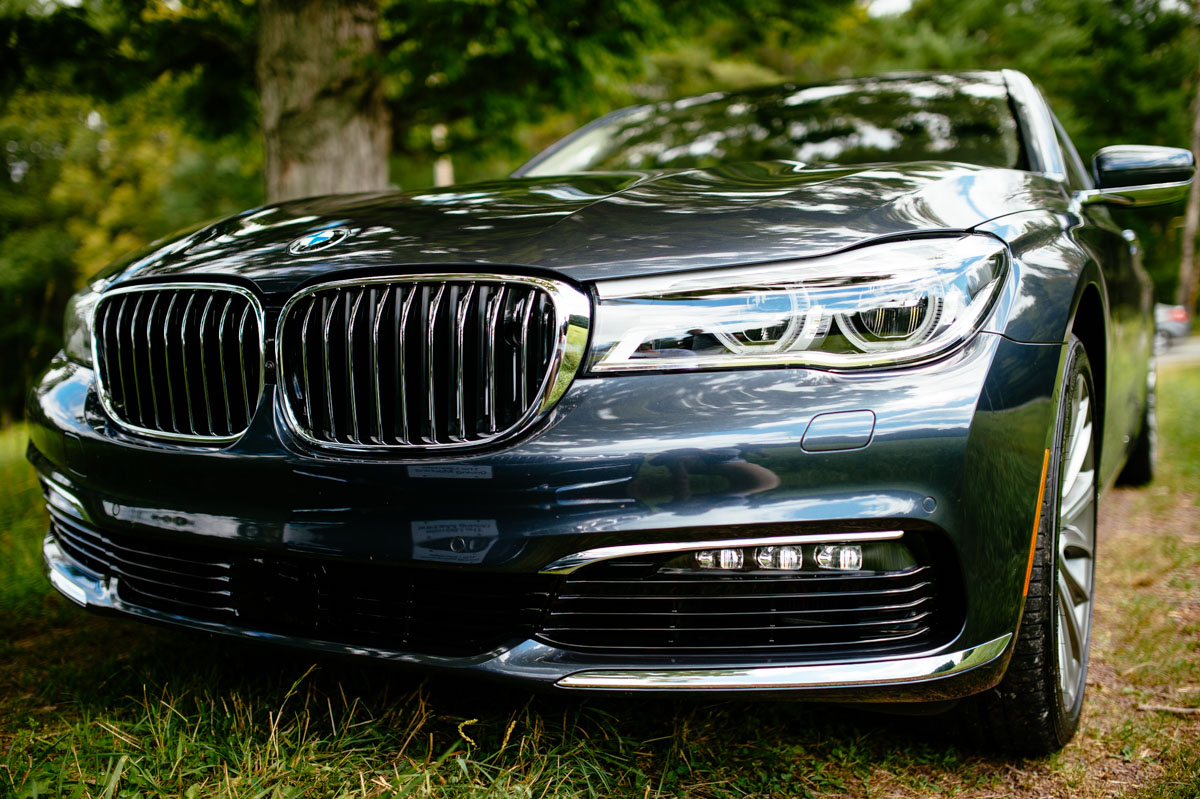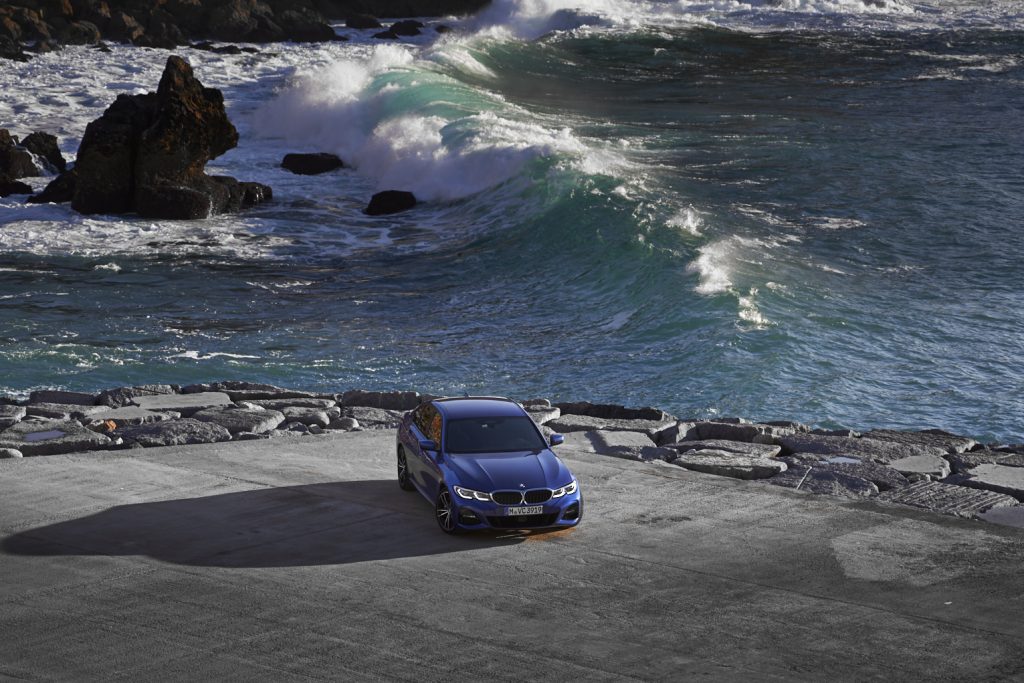Test Drive: BMW’s Reinvented 7 Series
We spent a day in the 2016 750i Sedan discovering all its finer details

The myriad of innovations within BMW‘s all-new flagship model—the 7-series—is apparent from the moment someone hands you a display key. Yes, display key. The small device features a color touch screen that can be used to answer those ubiquitous nagging questions—how much gas is in the car? Did I lock the doors? Are the lights off? And beyond the simple functionality of controlling locks and starting the car, you can even set a time by which you’d like the interior climate to be comfortable for your return to the vehicle after a hot day out or before a cold morning commute. Not forsaking design for functionality, the display key is ergonomically tuned to feel good in the hand and it’s styled as an extension of the vehicle. Little details executed in big ways set the 750i apart and define the future direction for all BMW products to follow.

Luxury consumers are seeing greater comfort, attention to detail and individualization in high-end their saloons. Bridging the dichotomy with “the ultimate driving machine,” the 750i xDrive has made huge strides evolving the passenger and driver experience. Set the driving mode to “comfort” and that’s what you’ll get, but put it in “sport” and the 445hp, 4.4l twin-turbo V8 engine launches this large four door from 0 to 60 in a mere 4.3 seconds while vocalizing a deep rumble and sticking turns like a car half its size. Among the innovations to thank for this is the Carbon Core frame that cleverly blends carbon fiber, aluminum and steel, lightening the vehicle’s total weight by 290 pounds and reducing its center of gravity.
The new 7 can be driven nearly autonomously—something its peers offer as well. Active cruise control combined with lane keeping assistance and collision mitigation results in the ability to almost not have to pay attention to the road as the car practically drives itself. One feature we loved, and haven’t seen before, was that the speed indicator in the heads-up display shows your speed in white if you’re within the posted limit or in red if you’re speeding.

Sedans of this stature are rarely gorgeous works of art; their safe designs are usually aesthetically benign given the limited market that can afford them and the diverse points of view among those customers. At first glance, this is the case with the 7. Design, however, goes much deeper than the basic form—it’s an exercise in problem solving and an obsession with detail. As BMW’s Head of Design Karim Habib says, “Our design philosophy is: Precision in poetry.” The more time you spend with a 7, the more this point of view reveals itself.

The Hofmeister Kink is one design element that BMW has consistently employed since its debut in 1961 on the 3200 CS. The rear-leaning, forward slanted trim is rendered as a metallic frame around the rear passenger windows. While it evokes power from behind, it has always been manufactured from at least two pieces of metal and included a small, but noticeable seam somewhere near the lower-rear corner. That seam, perhaps for most people subconsciously, represented imperfection and compromise. On the new 7 the Hofmeister Kink is made from one piece of metal, elegantly framing the passageway to the most luxurious backseat experience the brand has presented to date.

For those who prefer to be driven, the 7 Series is lush. All US deliveries are now long wheelbase by default, upping the luxury and ensuring plenty of legroom. The Rear Executive Lounge Seating Package allows the front passenger seat to move further forward and unfolds a footrest, and the rear seats recline and have built-in massagers. The 10″ seat-back screens are complemented by a Samsung touch tablet that neatly fits into the center armrest and includes custom software controlling all aspects of the passenger experience. There’s also a tray table that can be folded out for when the laptop is a bit too warm for the lap.

Like the rear seats, the front are finished with supple Nappa leather, diamond pattern stitching and patterned perforations that facilitate the performance of the seat heating or cooling functions. What’s most innovative about the front seats, however, is the touch sensitive interface to their controls. When you reach down to that narrow pocket between the seat and the door and feel around for the right buttons to adjust your height, recline or lumbar, the main iDrive screen in the center of the dash immediately shows you a picture of your seat and highlights the function that correlates to the button you’re touching. Surprise and delight.

BMW’s technology interface, iDrive, has been upgraded in its fifth generation. The main control knob is now supplemented by a gestural interface and a touch screen. A sensor in the headliner detects hand movements over the shifter allowing the driver or passenger to answer or reject phone calls with a swipe (a la Tinder), spin volume controls or perform favorite functions with a two finger point—we programmed ours to turn on the radio and tune in to NYC’s HOT 97. Adding touch control to the main screen is most handy for manipulating the map’s zooming and scrolling using familiar pinches and swipes.
All of the buttons in the car are galvanized with a thin layer of metal making them feel both premium and deeply integrated. Long a pet peeve of ours, some manufacturers who sell cars for twice the price of the 7 aren’t doing this and their plastic buttons feel cheap and incongruous with the more considered aspects of their cars.

The 16 speaker, 1400 watt sound system from Bowes & Wilkins delivers clear and delightful tunes. The speakers are beautifully integrated within the interior design of the cabin, even playing harmoniously with a/c vents and door pulls. It’s noteworthy that even while cruising at high speeds with the sunroof and windows open the music was barely compromised.

Perhaps more distinctively BMW than the Hofmeister Kink is the easily recognized kidney shaped grille. The two ovals on the nose epitomize the brand’s design language. “The way we do it at BMW is that the ornament is only to reinforce a function,” says Habib when speaking about the kidneys and their responsibility for air intake. On the new 7 the kidneys become active with vents opening when the engine needs a cooling breath and closing whenever possible to improve aerodynamics.

Available in the US starting 24 October 2015, the all-new 7 starts at $97,400. The car as we drove it had nearly every option and comes in at $129,245.
Images by Josh Rubin












